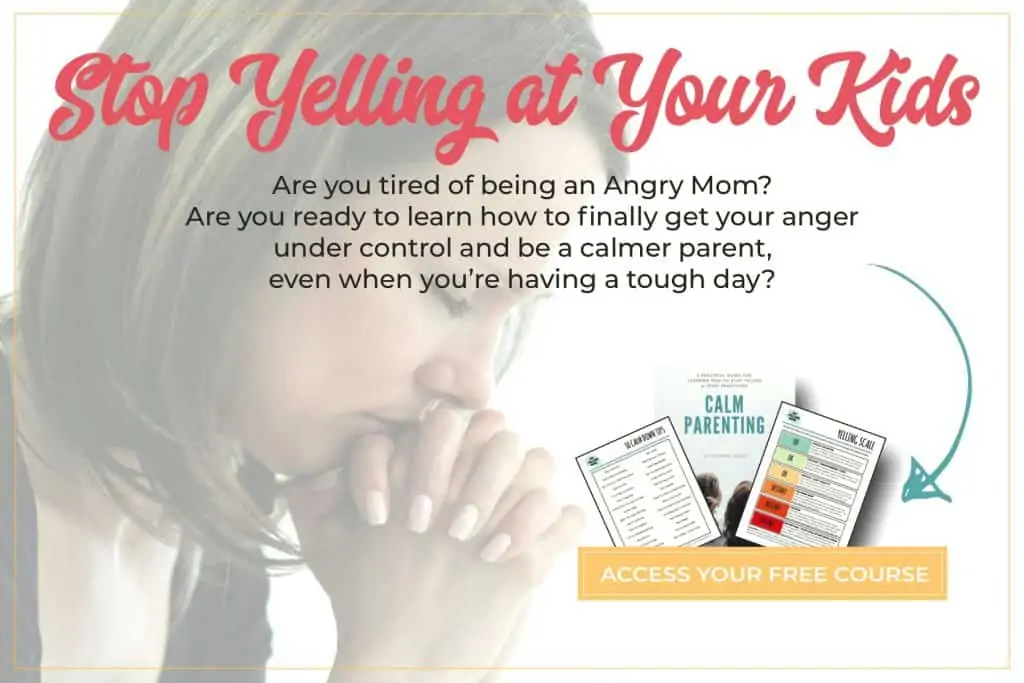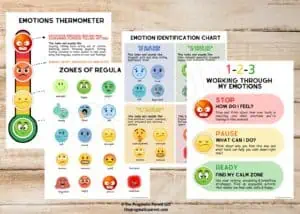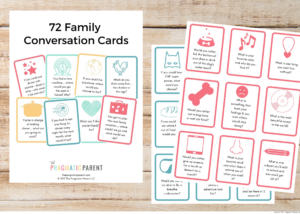It’s never too early to start have these safety conversations & teach kids about body safety. Important body safety rules to include in daily conversations.

What are the Body Rules Kids Need to Know?
Parents work hard to teach their children street safety, water safety and fit and refit car seat straps so children are snuggly safe inside the car. We make sure they wear helmets on their bikes, and sunscreen in the sun, and look both ways once, and then a second time before crossing the street.
Do you also take the time to teach and talk about body safety with your children?
I know this topic of conversation can feel uncomfortable, intimidating and even scary – for both the parent and the child – but when you avoid it, you’re doing your child a huge disservice.
The Centers for Disease Control (CDC) states that 1 in 6 boys and 1 in 4 girls are sexually abused before the age of 18. Want to hear something even worse? According to the US Department of Justice, 90% of occurrences were by someone the child knew (only 10% are strangers) and 23% of the perpetrators were children themselves!
We cannot always protect our children. They will break bones and scrape knees, and as scary as this sounds, are at risk for sexual abuse – most often perpetrated by other kids – but if we arm our child with information, this is the best preventative measure we can gift them.
10 Body Safety Rules for Include in Daily Conversations
1. Use Proper Names of Body Parts
Being teaching body safety from a young age. The first step is teaching your children the proper names for body parts at the same time you teach them all body parts (around the age of 1.)
Explain that everything that goes under underwear and a bathing suit are “private parts” and this teaches a child how to communicate using the proper names if someone touches them inappropriately.
2. Be Clear on What’s Private
Children should be taught what body parts are private and that if someone (a predator and unsafe person, which can be a child, adult, family member, etc.) touches their private parts, they need to tell a trusted adult straightaway.
Explain that Mom and Dad can see a child naked when they’re helping them dressed or taking a bath, but people outside the home cannot. A child’s doctor during a check-up can see a child’s private areas as long as Mom or Dad are in the room with them.
Explain that if someone asks to see or touch private parts, have the child show their private parts, ask the child to see or touch an adult’s private parts, or shows them images of private parts, this is all wrong, and also needs to be shared to a trusted adult right away.
3. Clear Understanding of What’s Safe & What’s Unsafe
Around the age of 2.5 – 3 as your child begins to developmentally comprehend and retain more, you can begin to have conversations about safe and unsafe touching.
Unsafe touch doesn’t have to strictly be in regards to private parts, although this is the biggest component of body safety. When you relate unsafe touch to a toddler, you can give examples such as pushing, hitting or kicking, as well as not respecting the person when they ask another to stop an action such as tickling.
Safe touch may be when your child snuggles with you, holds your hand or gives you a hug. Pushing boundaries when a child has spoken up and asked another to stop an action, but they will not such as tickling or wrestling, changes safe touch into unsafe touch.
When a child asks an action to stop, the person is supposed to respect you and listen because the child decides what feels safe and unsafe.
Additionally, if the child does not feel comfortable giving hugs or snuggling with someone, they shouldn’t be forced to do this because another person sees this as “safe” although the child is not comfortable with it. Body autonomy is important to respect from an early age.

4. Uncomfortable Feelings
When you have discussions with your child, it’s important to also help them discuss their feelings.
What does it feel like to be happy, sad, angry, scared? Children who are taught to verbalize their feelings are more Intune to the messages their body tells them.
The same is true for early warning signs when children feel unsafe. They may experience an “icky” feeling in their stomach, heart racing, sweaty palms, uncomfortable and an unexplainable sense something isn’t right about the situation or person.
If a child experiences any of these early warning signs about an unsafe person or unsafe situation, they need to tell a trusted adult right away.
5. No Secrets Allowed
Most perpetrators will ask children to keep secrets of the abuse, often in a casual and friendly way.
For example:
- “I love hanging out with you, but if you tell your parents or anyone else they won’t let us play together anymore. You can’t tell anyone, Ok.”
- “This is our little secret. If you tell anyone I’ll get in big trouble and so will you.”
As a general rule, it’s a good idea to not keep secrets at home, with friends, family or anyone. If anyone tells your children to keep a secret, especially body secrets, this is never OK and should be shared with any adult.
Creating a safe word for your family can make it easier for a child to tell, without divulging all the details if they are afraid or uncomfortable, at first.
6. No Pictures of Private Parts
This is one of the most missed parts of teaching body safety and nowadays with the vast technology, it’s extremely important to teach. There is an entire online community who will take naked pictures of children and share the with a large network online.
Teach children that no one should ever take pictures of private parts, or be shown pictures of other people’s private parts.
7. How to Get Out of Uncomfortable Situations
When a child is in an unsafe situation and needs to get away from another child, peer or adult who makes them feel unsafe or has asked them to do something unsafe, teach them it’s OK to excuse themselves to leave or use the bathroom. The point is that the child needs to get out of the situation quickly and if they need to lie to leave the room, this is OK in this circumstance.
8. Even if it’s Someone the Child Knows, It’s Never OK
TV and movies villainize child predators to look big, mean and scary. The truth is, child predators look like you and me – and sometimes, are children themselves! The point you need to get across when you teach body safety to a child is that no one can touch their private parts, whether it’s another child, family member, friend or stranger.
9. Go Tell an Adult When Somethings Not Right or Feels Wrong
Restate to your child they are the boss of their own body. A child can stop the actions of an unsafe peer or adult who is asking to touch or have their private parts touched by shouting, “NO! or “STOP!” and pushing the person away from them. Then, go tell an adult straightaway.
10. Children Never Get in Trouble
Keeping an open line of communication, and including this topic into your parenting conversations can make all the difference for your child. Reinforce that you will always believe them and that they can tell you anything and will NEVER get in trouble – no matter what happens.
Recommended Books about Child Safety:
More Child Safety Articles:
- 7 Critical Safety Rules for Kids: What They Need to Know
- Don’t Miss These Warning Signs of Child Abuse
- Common Tricks a Child Predator Uses: Telling Signs of a Child Predator
- 5 Helpful Tips for Keeping Kids Safe in Crowded Places
- Unsafe Information You May Be Posting Online Without Knowing It
- Why Every Family Needs a Safe Word














